Tulum Cenote Discovery Archaeological
Tulum Cenote Discovery Archaeological
Recent Tulum Archaeological Cenote Discovery Points Towards 2 Different Groups of Ancient Settlers
Humans have been living in the Yucatan Peninsula in Mexico since at least the late Pleistocene (126,000-11,700 years ago). Much of what we know about these first settlers in Mexico comes from nine well-preserved human skeletons found in caves and sinks submerged near Tulum in Quintana Roo, Mexico.Recently a new skull was discovered. Called “Chan Hol 3,” it’s actually nearly 30% of an entire skeleton, but what
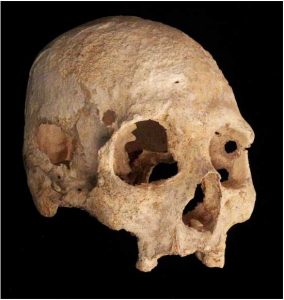
makes the new discovery so unique is that this skull, which is approximately 9,900 years old, is vastly different from the other 9 skulls.
Using craniometrics measurements, scientists were able to determine Chan Hol 3 was a woman in her 30s with a wide nose and flat forehead – which differs from the other skulls previously found. Chan Hol 3 also had no cavities in her teeth, where the other skulls did, indicating their diet was higher in sugar.
The difference between the skulls suggest the presence of at least two morphologically different human groups living separately in Mexico during this change from Pleistocene to Holocene (our current epoch). Meaning there were 2 different groups of settlers to the region during that time.
For more information check out https://www.sinembargo.mx/06-02-2020/3725686
El reciente hallazgo en un cenote de Tulum apunta a 2 grupos distintos de
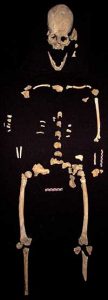
antiguos pobladores
Los humanos han vivid en la Península de Yucatán, México, desde al menos el Pleistoceno Tardío (126,000 – 11,700 años). Gran parte de lo que sabemos de estos primeros pobladores en México, proviene de nueve esqueletos humanos, bien conservados, hallados en cuevas y sumideros sumergidos cerca de Tulum en Quintana Roo, México.
En un hallazgo reciente se descubrió un cráneo nuevo. En realidad, se trata de casi 30% del esqueleto total hallado y al cual se le conoce como Chan Hol 3.Pero lo que hace que este nuevo hallazgo sea tan único es el cráneo cuya antigüedad es de casi 9,900 años y muy distinto a los otros 9.
A través de la craniometría los científicos pudieron determinar que Chan Hol 3 era una mujer de unos 30 años, de nariz ancha y frente plana; difiriendo de otros cráneos hallados anteriormente. En tanto que Chan Hol 3 no tenía caries, los dientes de los otros cráneos si presentaban caries, indicando que su dieta era más alta en azúcar.
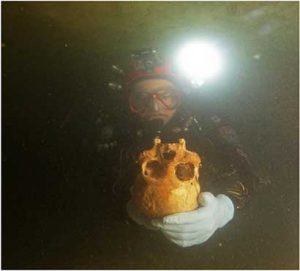
La diferencia entre los cráneos sugiere la presencia de al menos dos grupos humanos morfológicamente distintos que vivían por separado en México durante el cambio del pleistoceno al Holoceno (nuestra época actual). Ello significa que en la región existían 2 grupos diferentes de pobladores .
Para más información, visiten https://www.sinembargo.mx/06-02-2020/3725686
______________________________
Una ex yanqui de Connecticut quien llama hogar a Cozumel desde hace más de 15 años. Laura escapó al Caribe hace años, desplazándose de una isla a otra dando clases de BUCEO. Se dedicó a perder el tiempo en Jamaica y finalmente se detuvo en Cozumel para pasar unas vacaciones de 2 semanas que aún no terminan. Convenciendo a sus padres que pagaran una elegante universidad privada, obtuvo su título en Periodismo y Laura crea semanalmente Cozumel 4You, medios sociales y artículos promocionales sobre la Isla y también es moderadora en el grupo Cozumel 4 You en Facebook que actualmente cuenta con 25,000 miembros. Fabián, s umuy tolerante marido, desde hace mucho tiempo se resignó a no tener vida privada, pues se ha visto implicado en los diversos proyectos y planes que urde Laura. Son orgullosos padres de diversos perros y gatos rescatados. Mientras contempla su paso a través de la vida en el Caribe mexicano,Laura continúa siendo la pesadilla en la existencia de su muy tradicional suegra mexicana.
- Living Home Cozumel Financing - July 11, 2025
- Cozumel 4 July Fundraiser Success - July 11, 2025
- July Cozumel 4 You NEWS - July 11, 2025
An ex-Connecticut Yankee who has called Cozumel home for over 18 years, Laura ran away to the Caribbean years ago, bumped around the islands teaching SCUBA diving, lost some time in Jamaica, and finally stopped in Cozumel for a 2 week vacation that hasn’t ended yet. With a degree in Journalism from a fancy private college she convinced her parents to pay for, Laura writes, edits, and creates the weekly Cozumel 4 You news, social media, and promotional articles about the island, as well as moderates the Cozumel 4 You Facebook group, which currently has over 25,000 members. Her long suffering husband, Fabian, has long since resigned himself to having zero private life, as he’s been involved in her various schemes and plots since his arrival. Proud parents to a variety of rescue dogs and cats, Laura continues to be the bane of her traditional Mexican mother-in-law’s existence, as she muses her way through life in the Mexican Caribbean. ______________________________ Una ex yanqui de Connecticut quien llama hogar a Cozumel desde hace más de 15 años. Laura escapó al Caribe hace años, desplazándose de una isla a otra dando clases de BUCEO. Se dedicó a perder el tiempo en Jamaica y finalmente se detuvo en Cozumel para pasar unas vacaciones de 2 semanas que aún no terminan. Convenciendo a sus padres que pagaran una elegante universidad privada, obtuvo su título en Periodismo y Laura crea semanalmente Cozumel 4You, medios sociales y artículos promocionales sobre la Isla y también es moderadora en el grupo Cozumel 4 You en Facebook que actualmente cuenta con 25,000 miembros. Fabián, s umuy tolerante marido, desde hace mucho tiempo se resignó a no tener vida privada, pues se ha visto implicado en los diversos proyectos y planes que urde Laura. Son orgullosos padres de diversos perros y gatos rescatados. Mientras contempla su paso a través de la vida en el Caribe mexicano, Laura continúa siendo la pesadilla en la existencia de su muy tradicional suegra mexicana.
Cozumel Vivo Fest Sustainable Tourism
Cozumel Vivo Fest Sustainable Tourism Cozumel Vivo Fest: “Yes to the Reef”...
mayan crossing May
mayan crossing May Sacred Mayan Crossing Planned for May 26 & 27...
Cancun Airport Arrival Easier
Cancun Airport Arrival Easier Cancun Immigration Announces Improvements: Free Wi-Fi &...
Cozumel Mein Schiff Cruise Ship
Cozumel Mein Schiff Cruise Ship Cozumel welcomes Mein Schiff for her...










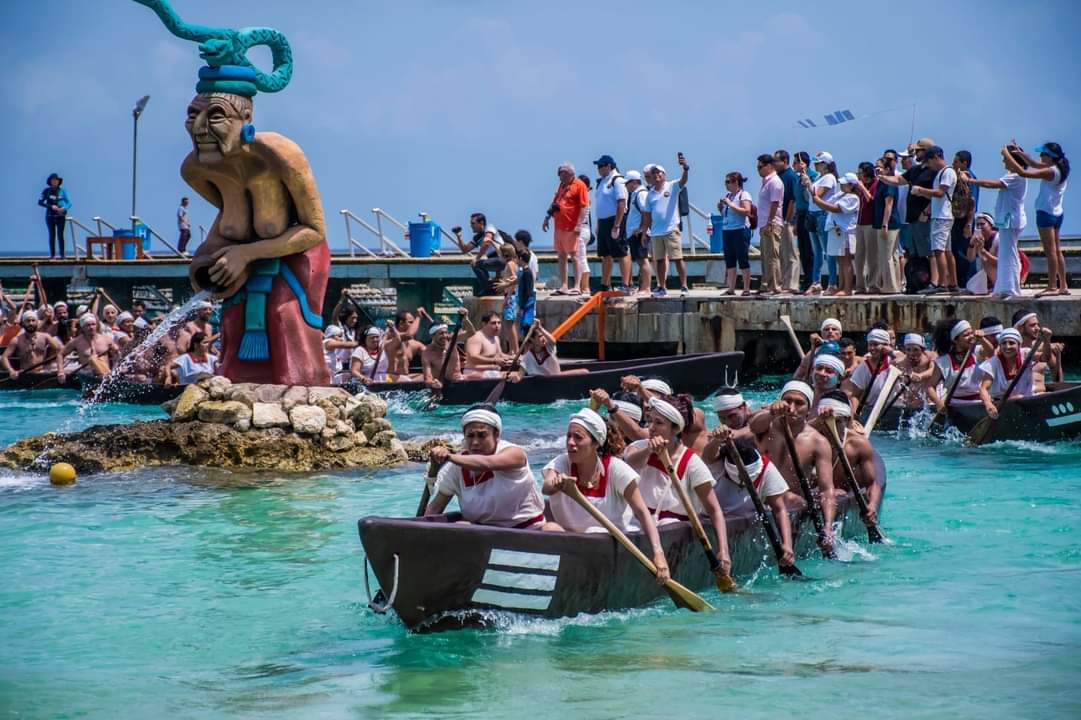
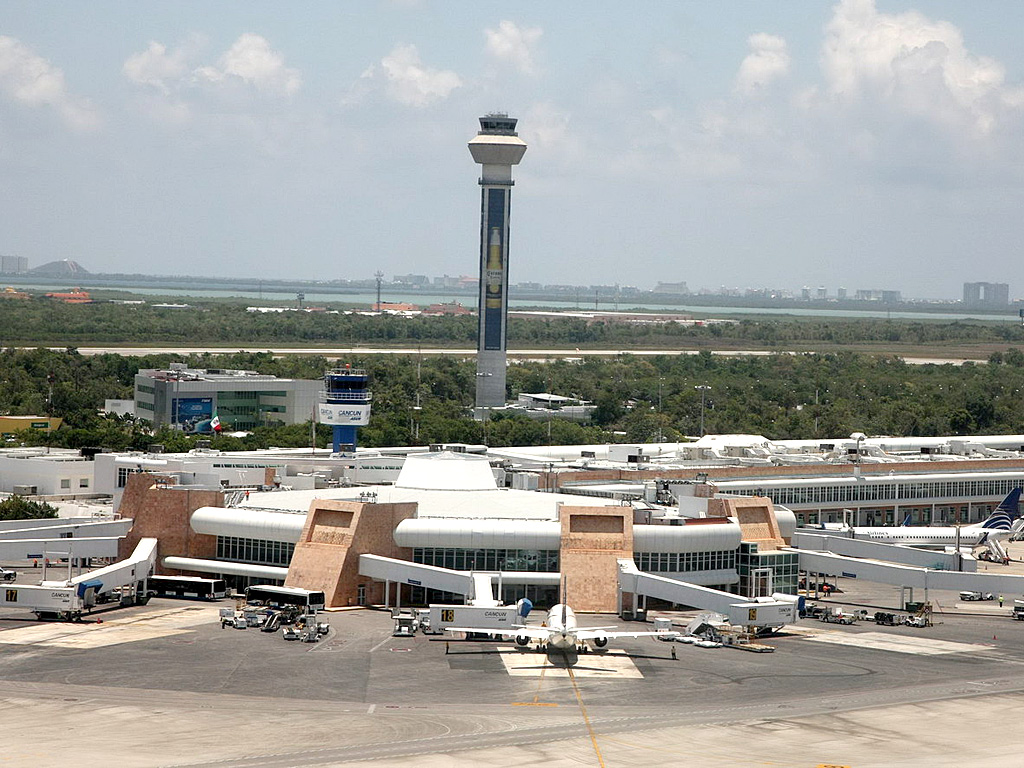







Leave a comment